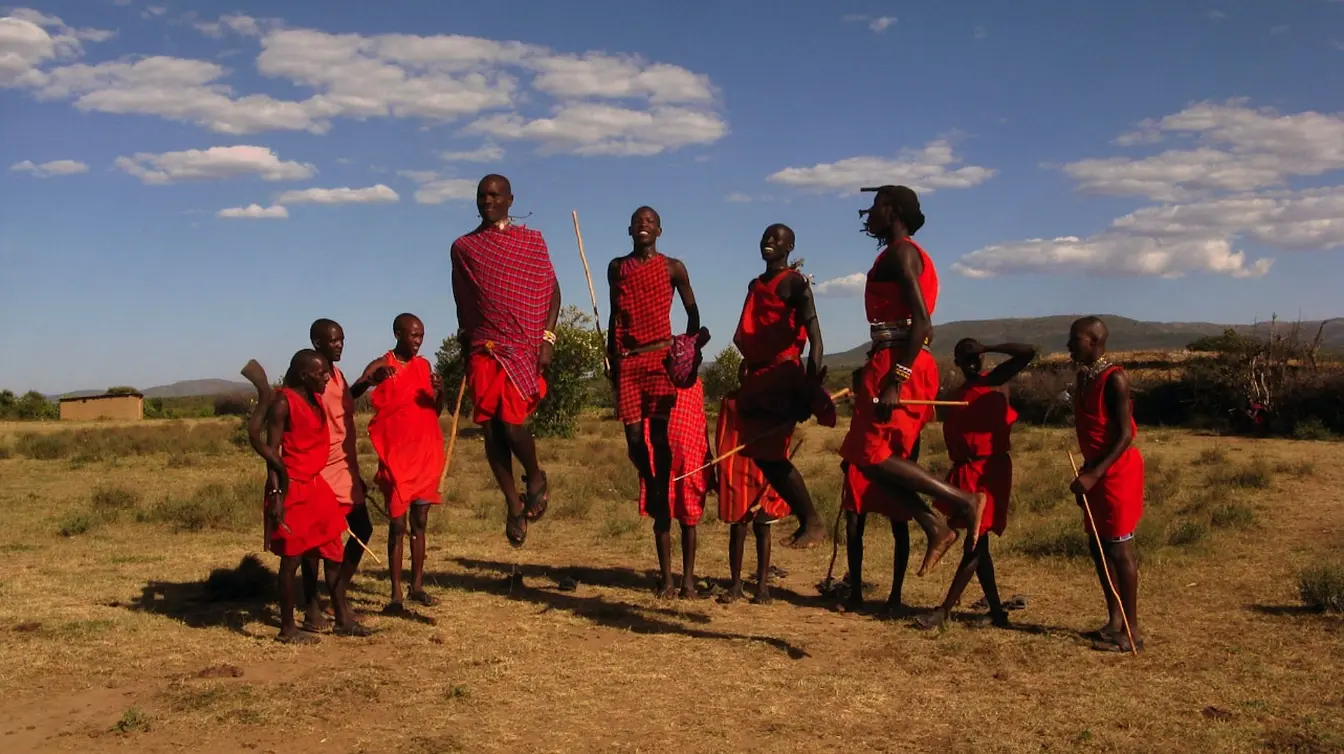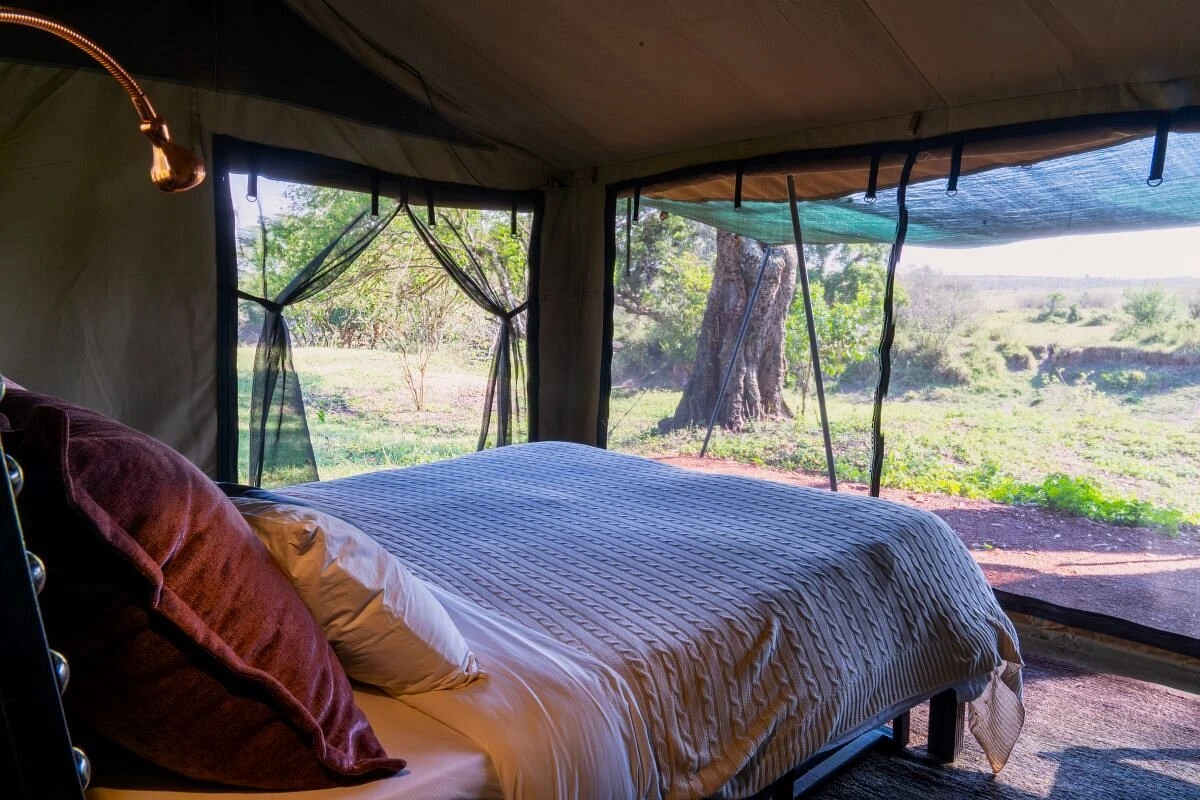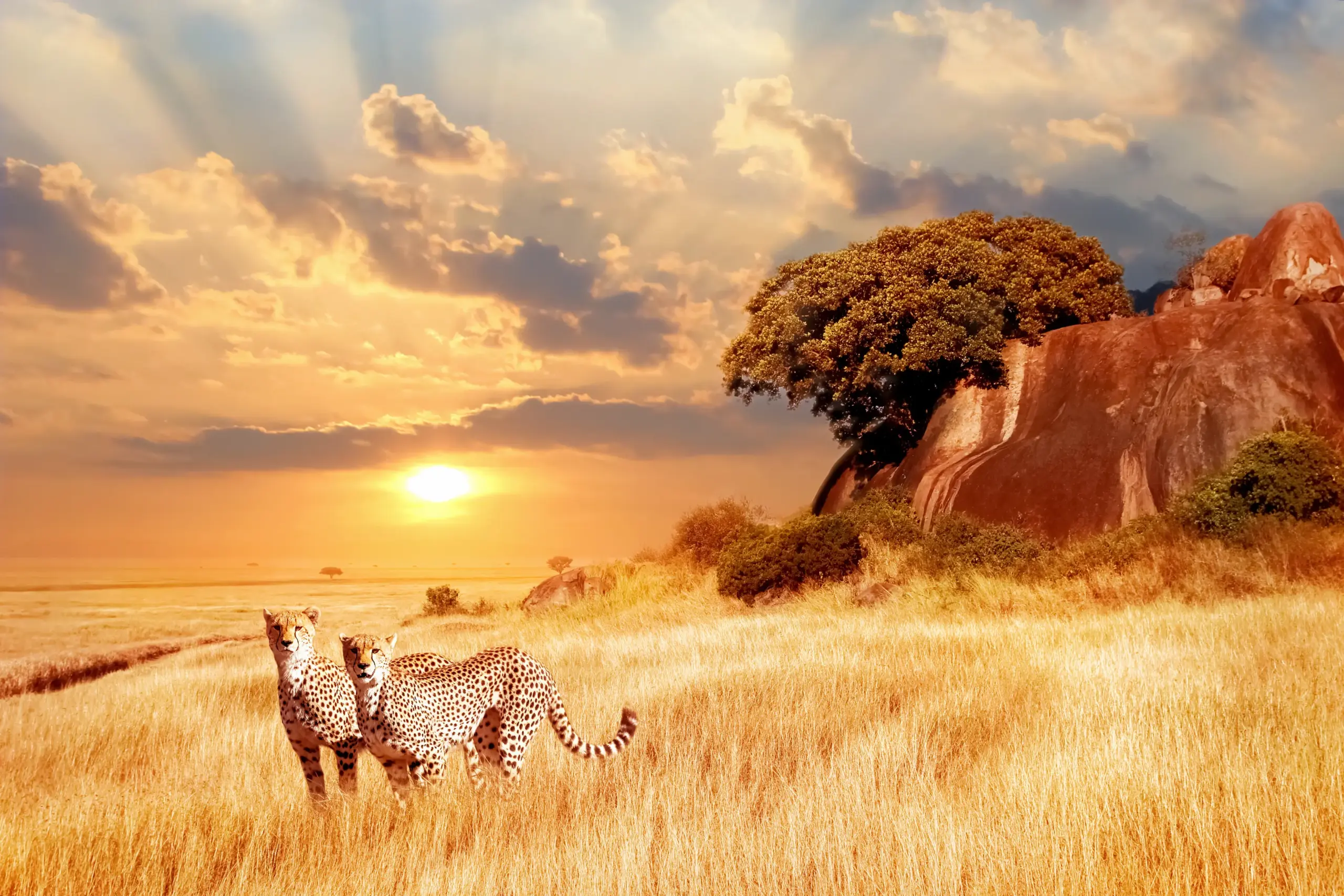FAQ Page: Frequently Asked Questions
Planning a safari in the Maasai Mara National Reserve or its nearby conservancies comes with many questions. To streamline your experience, we’ve put together a comprehensive FAQ section. Click on any question to uncover the answer, or use the quick navigation buttons below to find the information you need in seconds.
Masai Mara FAQ Video
Access to Masai Mara & conservancies
HOW DO I GET TO THE MASAI MARA?
For a hassle-free trip to the Masai Mara, taking a flight to one of its many airstrips is the best option. Alternatively, visitors can reach the reserve by road—either through a private transfer, self-drive, or as part of a guided safari within a broader safari holiday. Most journeys begin in Nairobi, Kenya’s lively capital. To learn more, check out our ‘Getting to Masai Mara’ page.
WHAT ARE THE OPENING TIMES OF MASAI MARA NATIONAL RESERVE?
When visiting Masai Mara, consider flying directly to one of its many airstrips for the quickest access. Alternatively, you can opt for a road transfer, embark on a self-drive adventure, or join a guided safari tour as part of a broader safari experience. Most journeys begin in Nairobi, Kenya’s bustling capital. To learn more, head over to our ‘Getting to Masai Mara’ page.
WHAT ARE THE ENTRANCE FEES OR PARK FEES FOR THE MASAI MARA?
Masai Mara National Reserve
Here’s a fresh take while keeping the word count and all keywords:
From January 1st to June 30th, visitors to the Masai Mara National Reserve must pay a daily entry fee of US$ 100 per adult. Children aged 9 to 17 are charged US$ 50 per day, while those 8 years and under enter for free. Starting July 1st through December 31st, the adult entry fee doubles to US$ 200 per day, though the child rate remains US$ 50. Furthermore, under the 12-hour rule, guests who leave after 10:00 am or take part in morning activities on their departure day must cover an additional day’s entry fee.
Mara Conservancies
When visiting a Masai Mara conservancy, be prepared to cover separate entry and conservation fees, which are independent of those for the national reserve. These charges generally fall between US$ 90 and US$ 200 per person per day.
Park Fees Coverage
Our booking rates always include the entry and conservation fees for both the national reserve and the conservancies, ensuring a seamless experience.
HOW LONG DOES IT TAKE TO FLY TO THE MASAI MARA?
Flights to the Masai Mara take off from Wilson Airport (WIL) in Nairobi, with travel times ranging from 1 hour to 2 hours and 30 minutes, depending on your destination. Since flights often serve multiple Masai Mara airstrips, expect up to three landings before reaching yours. Routes and schedules may shift due to passenger demand or weather changes. For available flights, check out flights to Masai Mara.
I WANT TO DRIVE. WHICH ENTRY POINT SHOULD I USE?
The Masai Mara National Reserve has multiple gates, including Sekenani, Talek, Oloolaimutiek, Musiara, and Oloololo. Your ideal entry point depends on the location of your safari camp or lodge within the reserve.
HOW DO I GET FROM THE MASAI MARA TO SERENGETI NATIONAL PARK?
The indefinite closure of the Bologonya border crossing complicates travel between the Masai Mara and Serengeti National Park. As a result, we strongly discourage self-driving or road transfers via the Isebania or Namanga border posts. Flying remains the most efficient mode of transport, though it comes with logistical considerations since Mara airstrips lack immigration facilities, leading to a lengthier process. Travelers can choose between two flight routes: The first requires a road transfer for border formalities between the Migori (Kenya) and Tarime (Tanzania) airstrips, but it only operates during high season and requires a minimum of two passengers. A more seamless alternative is flying from the Mara to Nairobi Wilson (WIL) and connecting to Kilimanjaro International Airport (JRO). This option eliminates the hassle of overland airstrip transfers and allows for an overnight stay in Nairobi before continuing to Tanzania.
About Masai Mara National Reserve & conservancies
WHAT IS THE SIZE OF THE MASAI MARA?
Nestled in southwestern Kenya, the Masai Mara National Reserve stretches across 1,510 square kilometers (approximately 583 square miles). Unlike many other wildlife reserves, it has no fences, creating a seamless connection with Tanzania’s Serengeti National Park and the surrounding conservancies. Together, these areas form the vast Mara-Serengeti ecosystem, which spans an impressive 30,000 square kilometers (about 12,000 square miles)—a landmass comparable in size to Belgium.
WHEN WAS THE MASAI MARA ESTABLISHED?
The Masai Mara National Reserve was first designated as a wildlife sanctuary in 1961 before being reclassified as a game reserve. Initially covering 520 square kilometers, its boundaries were extended to 1,821 square kilometers before undergoing further adjustments. In 1974, a section measuring 159 square kilometers was returned to the Maasai people, and two years later, another 162 square kilometers were excised, establishing the present-day size of 1,510 square kilometers. The private conservancies bordering the reserve emerged much later, with most taking shape in the early 2000s.
WHAT IS THE MASAI MARA FAMOUS FOR?
The Masai Mara’s striking beauty and incredible wildlife have made it a favorite subject of wildlife documentaries, National Geographic features, and BBC series. This is no coincidence—the Mara is one of Africa’s most celebrated safari destinations, renowned for its sweeping plains, diverse ecosystems, and extraordinary wildlife encounters. Picture endless golden savannahs, where acacia-dotted landscapes stretch into the horizon. Nowhere else will you find such an abundance of big cats, many of which have become legends in their own right. The Masai Mara is also the stage for one of nature’s most dramatic events—the Great Wildebeest Migration. Every year between July and October, around 1.5 million wildebeests, 300,000 gazelles, and 200,000 zebras embark on a perilous journey from Tanzania’s Serengeti, braving the treacherous Mara River in search of fresh grazing lands. This epic movement draws a high concentration of predators, including lions, cheetahs, and leopards, ensuring thrilling game-viewing experiences. The sheer spectacle of this migration has made the Mara a magnet for filmmakers, with iconic scenes from BBC’s ‘Big Cat Diary,’ ‘Dynasties,’ and multiple ‘Earth’ series episodes capturing its raw beauty. A destination that delivers exceptional wildlife sightings throughout the year, the Masai Mara remains an unmissable adventure for nature lovers.
WHAT DOES MASAI MARA MEAN IN ENGLISH?
The name “Masai Mara” comes from the Maa language of the Maasai people. “Mara” means “spotted” or “mottled,” a reference to the landscape’s unique look—an endless expanse dotted with acacia trees, bushes, and shadows from passing clouds.
STAYING IN MASAI MARA NATIONAL RESERVE & CONSERVANCIES
WHEN IS THE BEST TIME TO VISIT THE MASAI MARA?
The Masai Mara promises remarkable wildlife encounters year-round, but the most spectacular period is from July to October. This is when the Great Migration unfolds—one of nature’s greatest spectacles—drawing travelers eager to witness massive herds crossing the Mara River. Due to the high demand, expect premium accommodation rates and busier safari routes.
For a more budget-friendly and quieter experience, consider visiting in the shoulder or low seasons. From March to May, the ‘green season’ transforms the Mara with daily rains, painting the landscape in vibrant hues and attracting birdwatchers with its rich avian diversity. Many safari lodges and camps also offer discounts during this period. Ultimately, the ideal time to visit depends on what you seek—thrilling wildlife action, fewer crowds, or a serene, budget-conscious adventure.
WHAT IS THE WEATHER LIKE IN MASAI MARA?
Unlike common assumptions, the Masai Mara is not overwhelmingly hot. Positioned at altitudes between 1,500 and 1,900 meters, the region enjoys comfortably warm days and notably cooler nights. Between June and August, clear skies dominate, while September and October bring a slight rise in temperature alongside intermittent showers. November and December mark the onset of a milder rainy period, featuring short-lived showers. This is followed by the predominantly dry stretch of January and February, before the heavier rains set in from March to May, peaking in April. For a detailed breakdown, visit our Masai Mara weather and climate page.
DOES IT RAIN OFTEN IN THE MASAI MARA?
Rainfall in the Masai Mara follows two seasonal patterns. The shorter rainy season, lasting from November to December, consists of passing showers. In contrast, the longer rainy season extends from March through May, with April receiving the heaviest downpours. Although all-day rains are rare, expect frequent showers during this time. These rains nourish the landscape, creating the lush ‘green season.’ If visiting during these months, packing waterproof and warm clothing is highly recommended.
Wildlife Encounters in the Masai Mara & Its Conservancies
WHAT ANIMALS CAN I EXPECT TO SEE IN THE MASAI MARA?
The Masai Mara’s untamed wilderness ensures every safari is unique, meaning no particular animal sighting is guaranteed. While we can’t promise encounters with lions, cheetahs, leopards, or any other species on your wish list, the Mara’s sweeping plains are world-famous for their abundance of big cats and the spectacle of the Great Migration. This reserve shelters the iconic Big Five, though rhinos are less commonly spotted. As part of the vast Mara-Serengeti ecosystem—Africa’s most wildlife-rich region—the Masai Mara boasts an unmatched diversity of species, making it one of the continent’s premier safari destinations.
SHOULD I BRING BINOCULARS FOR A MASAI MARA SAFARI?
Yes, binoculars are a must-have for your Masai Mara safari. They enhance your experience by bringing distant wildlife, especially birds, into sharp focus. While some safari camps and lodges may offer binoculars for guest use (check our accommodation pages for details), and certain safari guides might carry an extra pair in the vehicle, availability isn’t guaranteed. To fully immerse yourself in the action, it’s best to bring your own.
ARE LEOPARDS FOUND IN THE MASAI MARA?
Leopards are indeed residents of the Masai Mara, but their elusive nature makes them tricky to spot. As the most secretive of Africa’s big cats, they tend to stay hidden, often draped over tree branches or camouflaged in dense undergrowth. While seeing one requires patience and a bit of luck, your guide will be skilled at recognizing the telltale signs—such as warning calls from other animals—that might lead to an unforgettable sighting.
HOW MANY BIRD SPECIES CAN BE FOUND IN THE MASAI MARA?
The Masai Mara is home to an astonishing 470 recorded bird species.
DO TIGERS LIVE IN THE MASAI MARA?
No, tigers are not native to the Masai Mara. If you’re eager to see these striped predators, you’ll need to venture to Asia, where they roam the forests and grasslands.
Masai Mara Safari Lodges & Camps
What Types of Accommodation Are Available in Masai Mara National Reserve & Its Conservancies?
Masai Mara offers a diverse range of accommodations, from luxury tented camps to authentic bush campsites. You’ll find everything from high-end mobile tented camps like Fairmont Mara Safari Club to stylish lodges such as Mara Serena Safari Lodge and Olare Mara Kempinski Camp. Other standout options include Angama Camp, Mara Bushtops, Mahali Mzuri Camp, Olarro Camp, Porini Camp, Cottar’s Camp, and Mara Serena Lodge. Scattered throughout the reserve and conservancies, these accommodations cater to various tastes and budgets, ensuring every traveler finds a perfect fit.
Are Safari Activities Included in the Accommodation Rates in Masai Mara?
The inclusion of safari activities depends on the lodge. Most Masai Mara safari camps and lodges provide all-inclusive packages that feature guided vehicle game drives. Lodges situated within the Mara conservancies often offer additional experiences such as night game drives, guided walking safaris, hot air balloon safaris, and immersive Masai village tours. The rates listed on this site typically cover these activities, and each lodge’s page, along with our price quotations, clearly details what’s included. If a package does not encompass safari activities, it will be explicitly mentioned.
Are Meals and Drinks Covered When Booking a Stay in Masai Mara?
Regardless of the lodge you select, your stay at any of the featured Masai Mara safari camps and lodges includes all meals—breakfast, brunch, lunch, and dinner. Many accommodations also incorporate drinks into their rates, distinguishing between ‘local’ beverages, which are included, and ‘premium’ selections, which require an additional charge. At the very least, tea and coffee are always complimentary. Each lodge’s webpage and our quotations specify whether drinks are part of the package.
What Are the Standard Check-in and Check-out Times in Masai Mara?
Check-in at Masai Mara lodges typically starts at 13:00, while check-out usually takes place between 10:30 and 11:00, allowing guests to enjoy a final morning safari and breakfast before departure.
Do All Masai Mara Safari Camps Feature Private Plunge Pools?
No, not every lodge comes with private plunge pools. Generally, the most exclusive safari lodges offer this luxury. It’s also important to note that some accommodations in the Masai Mara do not have shared swimming pools either.
Which Safari Lodge in Kenya Is Owned by Sir Richard Branson?
Sir Richard Branson’s Virgin Limited Edition owns Mahali Mzuri, a luxury safari camp nestled in the Olare Motorogi Conservancy.
IS MASAI MARA WORTH A VISIT?
Without a doubt, the Masai Mara is a destination you can’t afford to miss. Situated in southwestern Kenya, this world-renowned wildlife reserve is home to an extraordinary range of species, including the legendary Big Five—lion, elephant, leopard, buffalo, and rhinoceros. What truly sets the Masai Mara apart is the annual wildebeest migration, a breathtaking phenomenon where millions of animals move across the plains in search of fresh pasture. This spectacle offers unmatched wildlife encounters in a setting of unparalleled natural beauty. Beyond the landscapes and wildlife, engaging with the Maasai people adds a cultural depth to the experience, offering a glimpse into their rich traditions. But let’s be real—if you’re looking for an impartial answer, you might not get one here.
WHEN SHOULD YOU BOOK YOUR MASAI MARA SAFARI?
Safari lodges in the Masai Mara fill up quickly, especially during peak periods like the Great Migration, Christmas, and Easter. To ensure you secure your ideal accommodation, it’s best to start making arrangements at least 8 to 12 months ahead. For high-demand seasons, booking 12 to 18 months in advance is even wiser. Some of the most exclusive safari camps are fully reserved up to two years in advance during peak times. If you’re traveling with family or a group, early reservations are crucial, as many lodges are intimate in scale, offering only a limited number of spacious rooms.
IS ACCOMMODATION IN MASAI MARA SUITABLE FOR DISABLED TRAVELLERS?
Wheelchair-accessible rooms are available in only a select few camps across the Masai Mara. Contact us for more information on suitable options.
DO MASAI MARA CAMPS OFFER DISCOUNTS OR SPECIAL DEALS?
Yes! Many camps in the Masai Mara feature special offers, including honeymoon discounts and exclusive ‘stay longer, pay less’ promotions.
Inquire About Your Masai Mara Safari Adventure
Don’t let your safari questions go unanswered! Whether you’re planning your first visit to the Masai Mara or looking for insider tips, our FAQ page has everything you need for a seamless adventure. Click below to find answers or get in touch with our expert team for personalized guidance. Your unforgettable safari starts here!
You can also reach us through social media via:
Welcome to AjKenya Safaris
Thanks for stopping by! We’re excited to help you plan an unforgettable safari.
- Phone: +254 748 258880
- WhatsApp: +254 748 258880
- Email: [email protected]
- Email: [email protected]





